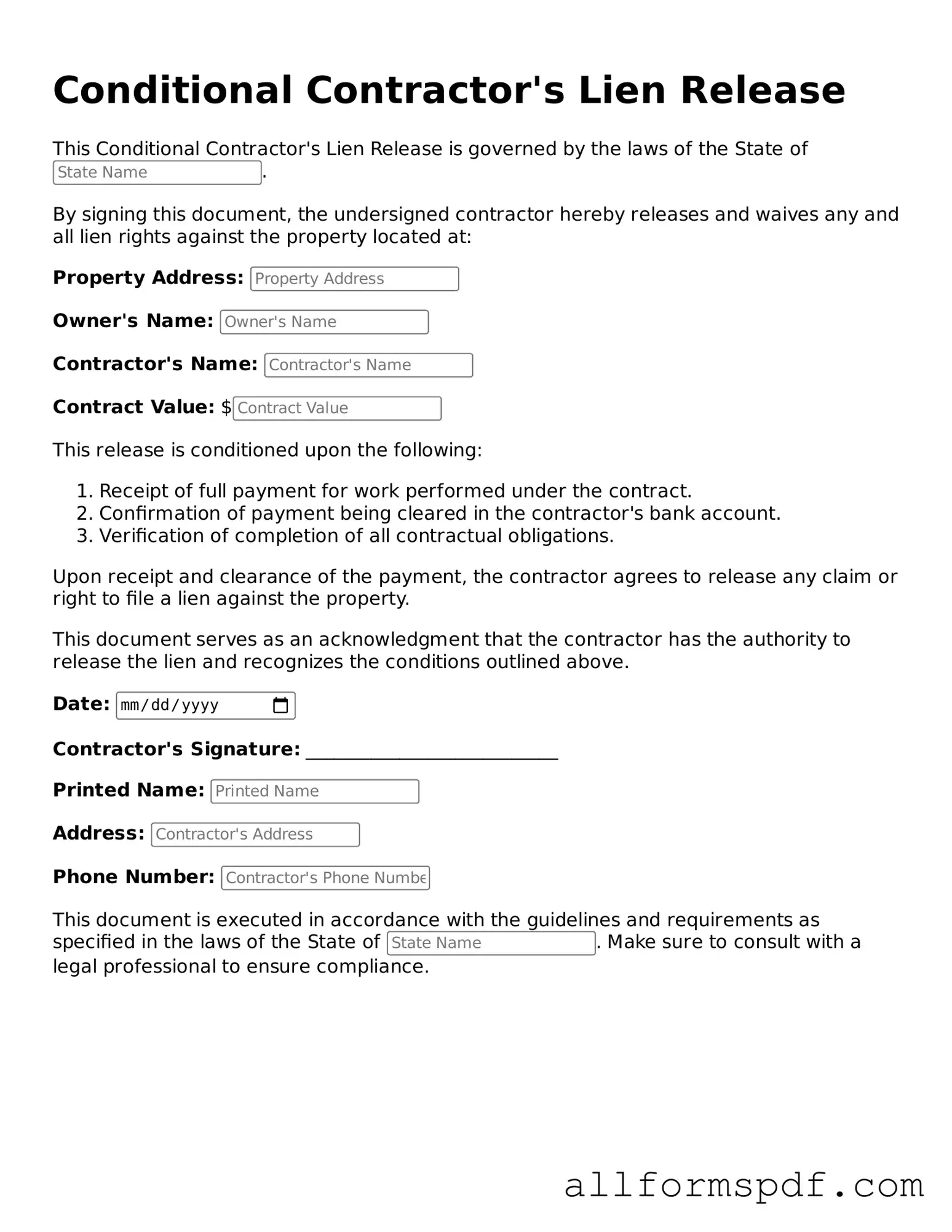Filling out the Conditional Contractor’s Lien Release form can be straightforward, but several common mistakes can lead to complications. One frequent error is failing to include all necessary parties. It is essential to list everyone involved in the contract, including subcontractors and suppliers, to ensure that the release is valid.
Another mistake involves incorrect dates. The date on the form should reflect when the work was completed or when the payment was made. An incorrect date can create confusion and may invalidate the release. Additionally, not providing a clear description of the work performed is a common oversight. This description should be detailed enough to identify the specific services or materials provided.
People sometimes neglect to sign the form. A signature is a crucial component of the release, and without it, the document may not hold up in a legal context. Furthermore, failing to have the signature notarized can also be a significant error. Many jurisdictions require notarization for the release to be enforceable, so it is important to check local regulations.
Another mistake is using vague language in the release. Clarity is key; the form should clearly state that it is a conditional release. Vague terms can lead to misunderstandings and disputes later on. Additionally, not keeping a copy of the signed release is a common oversight. It is important to retain a copy for personal records, as it may be needed for future reference or disputes.
People may also overlook the importance of ensuring that all prior payments have been made. If there are outstanding payments, the release may not be valid. Lastly, not understanding the implications of the conditional release can lead to problems. It is essential to recognize that this type of release is contingent upon receiving payment, so it should be used with caution.
